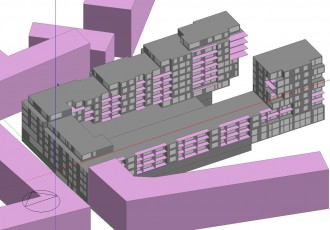Thermal stability
Thermal stability assessment is carried out according to the binding standard ČSN 73 0540-2 Thermal protection of buildings – Part 2: Requirements. his standard specifies the requirements for the thermal stability of rooms for winter and summer seasons. For the winter period, the maximum drop in the resulting room temperature during the theoretical heating break is determined. For the assessment of thermal stability in summer, the maximum daily room air temperature is prescribed.
Main benefits
What you get: An overview of the building's condition in terms of thermal stability. Proposal for measures to meet the requirements of ČSN 73 0540-2.
To whom:
- Development companies
- Design firms
- Property owners
- Property management
Thermal stability assessment can be done in two basic ways. One is classical method, for which the critical room is being assessed. The critical room for the assessment of thermal stability in the winter period is the room with the highest average heat transfer coefficient Um of the room structure according to ČSN 73 0540-4. The critical room for the assessment of thermal stability in the summer period is the room with the largest area of directly illuminated openings oriented W, SW, SE, SE, E, in proportion to the floor area of the adjacent space.
The classical method is simpler, less time-consuming. Critical rooms are assessed separately, independent of the behaviour of the rest of the building. However, this method is associated with higher costs for the implementation of the compliance measures, as the calculation is less detailed and more inclined towards safety.
The second option is dynamic simulation. In this method, a 3D model of the building is used to simulate the real behaviour of the whole building over an arbitrary period of time. The calculation is more detailed, more complex and more accurate. As a result, the cost of meeting the standard requirements is lower, as measures are only designed where they are really needed.
 Fig. 1: Model of a residential building including surrounding buildings for dynamic simulation in DesignBuilder
Fig. 1: Model of a residential building including surrounding buildings for dynamic simulation in DesignBuilder
Are you interested in having a thermal stability assessment? Contact us



 Ensuring thermal stability of the building in winter and/or summer
Ensuring thermal stability of the building in winter and/or summer Compliance with legislative requirements
Compliance with legislative requirements